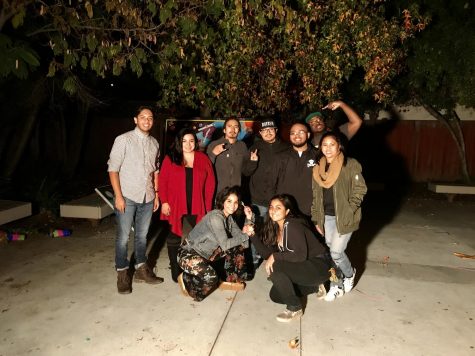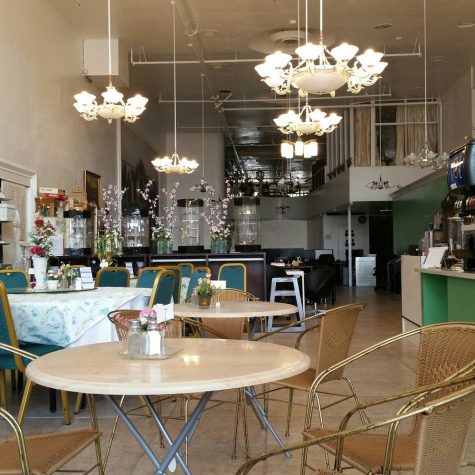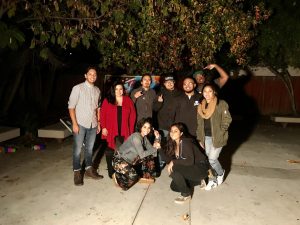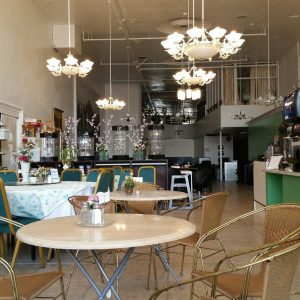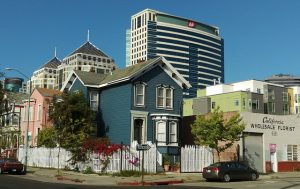Russell City: A forgotten town that used to be in Hayward
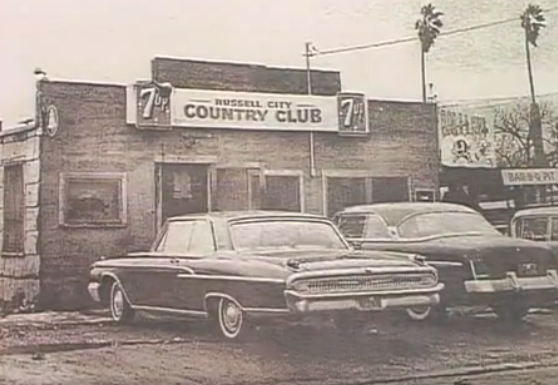
February 7, 2018
A mural on the side of a building located on A Street in Hayward depicts three musicians playing between two iconic city landmarks: a train station and a country club. The sepia colors are reminiscent of an antique photograph.
“The city may be gone, but the memories live on,” reads its message, stretched across the bottom third of the mural.
The mural, painted in 2012, is dedicated to the blues scene of Russell City. Memories of the blues scene may live on, but what about the memories of the people?
Most physical traces of Russell City are gone, since the city of Hayward demolished it to build an industrial park in the 1960s. However, the memories of those who lived there and the documents they left behind, such as newspaper articles, town hall meeting transcripts and personal testimonies entrusted to local historians, still yet survive.
Russell City was an unincorporated area of Hayward. Established in 1853, it was located off the Hayward Shoreline, an area that today sits wedged between Chabot College and the Hayward Airport. It grew to be a bustling and ethnically diverse community, according to archival material showcased at the Hayward Area Historical Society’s Museum.
Post-World War II era newspapers were written with a certain negative bias towards the city. Newspapers from that time period, such as The Daily Review, frequently referred to Russell City as a “blight,” “slum” and a “squalid mess.” While these newspapers seemed to portray Russell City in only one perspective, there is a forgotten history only accessible through firsthand accounts from Russell City natives or archival museum displays.
Archaeologists and historians with knowledge of the region agree that the City of Hayward controls Russell City’s narrative, which, at best, is a romanticized version of what life was really like there.
While blues music is a significant part of Russell City’s history, there’s more to the city than just music. The city’s true narrative is one of defiance, diversity and resilience. Hayward has hosted the Russell City Blues Festival, celebrating the musical roots of the area since 1995, however it does not link directly to the history of the city.
John Christian, associate archivist from the Hayward Area Historical Society, asserts that Russell City was a product of racial steering, which was a technique practiced by realtors to keep people of color out of white neighborhoods. As Black and Latino families came from the south in search for better jobs and opportunities, they sought homes in Hayward. He explained that “due to discriminatory housing practices, they were often forced to buy property in the unincorporated area known as Russell City.”
Christian, who collects historical documents from Hayward and its unincorporated areas, believes that the legacy of Russell City is in the hands of Hayward residents, not the government. “Russell City has taken a mythological space in the minds of people,” referring to multiple accounts of Russell City being honored, like a local restaurant naming a dish after the area.
According to the City of Hayward’s website, Russell City started as Danish settlement, named after New England school teacher Joel Russell, who came to California during the Gold Rush. But the Great Migration and other factors lead to a significant rise in the Black population.
“Between 1940 and 1960, the white population in California doubled, while the Black population increased sevenfold from 124,306 to 883,861,” explains author Megan Wilkinson, citing US Census numbers. Wilkinson, who conducted her senior thesis on Russell City while attending San Francisco State University, which is archived at the Hayward Area Historical Society’s research room.
Former Russell City residents have admitted to Wilkinson that “the town received no funding or resources from the City of Hayward or Alameda County.” With no government cooperation, the residents of Russell City had to rely on themselves. Residents pooled money together to buy a used fire truck and would often drive sick or injured people to the nearest hospital because ambulance services would not come to Russell City.
One resident interviewed in Wilkinson’s thesis remembers racial profiling in the hospitals. “Fairview Hospital wouldn’t serve Black people, but the Hayward Hospital a few minutes away would.”
The City of Hayward wanted to turn the area of Russell City into an industrial business park. Legislative rulings were made in order to steer people out of Russell City, such as a 1953 zoning law which made it illegal for people to build on the land. Hayward also started buying up Russell City property and former residents believe that this practice was unfair.
Perhaps the final strike to Russell City was the wave of reportedly unresolved arsons that swept the area in the late 1950s. Many fires were blamed on electrical malfunctions, kitchen appliances or cigarettes, but some residents believe houses were being burned down to force people out of Russell City. Reverend Green, a former resident of Russell City, was interviewed by Wilkinson in 2002. He claimed that the Hayward government hired someone to burn down houses. According to Green, the City of Hayward “had incentives to start the fires,” and he went on to add that, “it was an easier and cheaper way to relocate residents.” Reverend Green’s church was also burned down.
Reverend Green mentioned other ways that the local government drove families out, such as the previously mentioned building permit, and PG&E’s refusal to install new water and gas lines or to repair existing ones. Ironically, the Russell City Energy Center, opened in 2013, supplies clean energy to much of Alameda County.
The Hayward Area Historical Society continues to update their Russell City archive. As the true narrative or Russell City unfolds, local historians encourage residents to learn the true history of their city, not just the history told by a government-sanctioned mural and blues festival.




